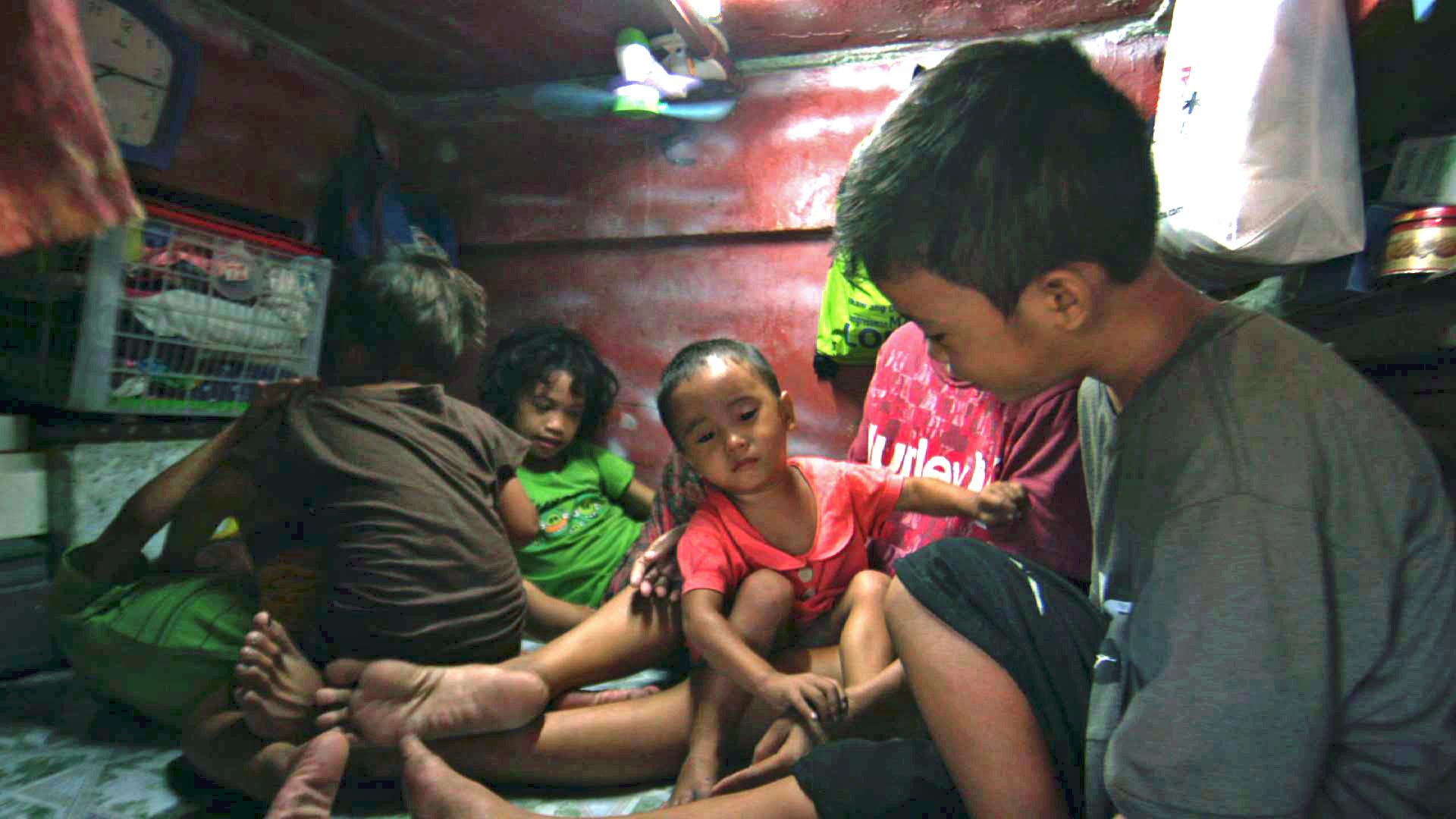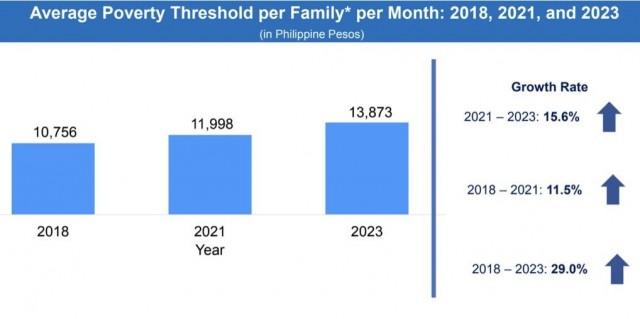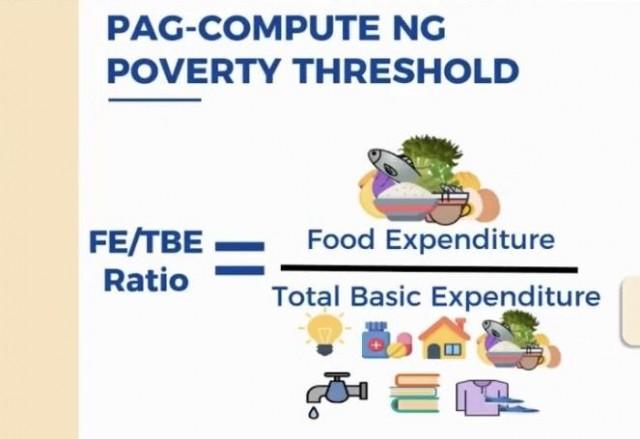Who is poor? Here's how PSA classifies poverty among Filipinos

The number of Filipino families living in poverty has declined in 2023 compared to two years earlier, according to the results of the Philippine Statistics Authority's (PSA) Family Income and Expenditure Survey (FIES).
The latest FIES found that the number of poor Filipinos last year stood at 17.54 million, lower than the 19.99 million poor individuals in 2019.
As a percentage of the total population, the number of poor Filipinos translates to a poverty incidence rate of 15.5%, down from 18.1% in 2021.
The number of poor individuals is also equivalent to 2.99 million Filipino families considered poor from 3.5 million families in 2021, translating to a poverty incidence rate among families of 10.9%, down from 13.2% two years earlier.
However, how does the government classify a person or a family as poor?
Republic Act (RA) 8425, or the Social Reform and Poverty Alleviation Act, defines "poor" as those individuals and families whose income fall below the poverty threshold or "poverty line" set by the National Economic and Development Authority (NEDA) through the PSA.
The law further states that those considered poor are those who cannot afford, in a sustained manner, their minimum basic needs of food, health, education, housing, and other essential amenities of life.
For 2023, the poverty threshold—the minimum income required for a family to meet the basic food and non-food requirements—was set at a national average of P13,873 per month, higher than the poverty ceiling of P11,998 in 2021.


The food threshold, meanwhile, is the minimum required for a family to meet the basic food needs, which satisfies the nutritional requirements of 100% recommended energy and nutrient intake for energy and protein and 80% for other nutrients.
The monthly food threshold, as of 2023, was set at P9,581 for a family of five or about P64 per person per day.
Household spending for food
At a press briefing in Quezon City, National Statistician Claire Dennis Mapa said the food threshold or the cost of basic food needs of a family takes up about 70% of the poverty threshold.
"Ang nakikita natin ay una ay 'yung pagtaas ng presyo ng mga bilihin kaya tumaas ang poverty threshold… reason diyan is inflation, in particular 'yung high food inflation noong 2022 at 2023," the PSA chief said.
(What we are seeing is that the poverty threshold increased due to inflation, particularly the high food inflation in 2022 and 2023.)
READ: Who is middle class? Here's the classification from Philippine gov't think tank
Mapa explained that poverty statistics were determined using the average retail price of food from January to December 2023 and the 2023 FIES conducted from July 8 to 31, 2023 and January 8 to 31, 2024 in a sample size of 163,256 families nationwide.
Average family income
The PSA chief, citing results of the FIES, said the average annual income of Filipino families next year was estimated at P353,230, up 15% from P307,190 in 2021.
Mapa said the increase in income, which resulted in fewer poor Filipinos last year, was the faster rise in income among families versus the increase in prices.
"Despite na may pagtaas ng food inflation, tumaas nang mas mabilis ang kita ng mga pamilya… Ito ang rason bakit bumaba ang poverty incidence," he said.
(Despite increases in food inflation, families' incomes rose faster... This was a reason why poverty incidence declined.)
Rising salaries, wages
Mapa added that income growth came mainly from wages and salaries, as well entrepreneurial activities.
Meanwhile, Filipino families spent an average of P258,050 in 2023, up 12.8% from P228,800 in 2021.
Among regions, the National Capital Region (NCR) registered the highest average annual family income last year at P513,520.
Metro Manila was followed by CALABARZON at P426,530 and Central Luzon at P375,240.
The Bangsamoro Autonomous Region in Muslim Mindanao (BARMM) recorded the lowest average annual family income at P206,880 followed by Zamboanga Peninsula at P257,140 and Negros Island Region (NIR) at P266,290.
11 out of 18 regions saw declines in poverty incidence
The PSA also said the NCR remained the "least poor" among the regions in the country, with a poverty incidence among families estimated at 1.1% in 2023.
In contrast, Region IX or Zamboanga Peninsula recorded the highest poverty incidence among families at 24.2%, followed by the BARMM at 23.5% and NIR at 22.6%.
Out of the 18 regions, the PSA said 11 recorded statistically significant decreases in poverty incidence among families in 2023 from 2021.
Caraga showed the most notable improvement, the PSA said, with a poverty incidence among families of 14.9% in 2023, a decrease of 11.0 percentage points from its poverty incidence of 25.9% in 2021.
In addition, four regions also exhibited downtrends in their poverty incidence among families in 2023 from 2021.
Meanwhile, increasing trends were recorded in the poverty incidence among families in MIMAROPA at 1.2 percentage point difference, NIR at 4.4 percentage point difference and Zamboanga Peninsula at 0.8 percentage point difference, "with only NIR exhibiting statistically significant increase." — VDV, GMA Integrated News




